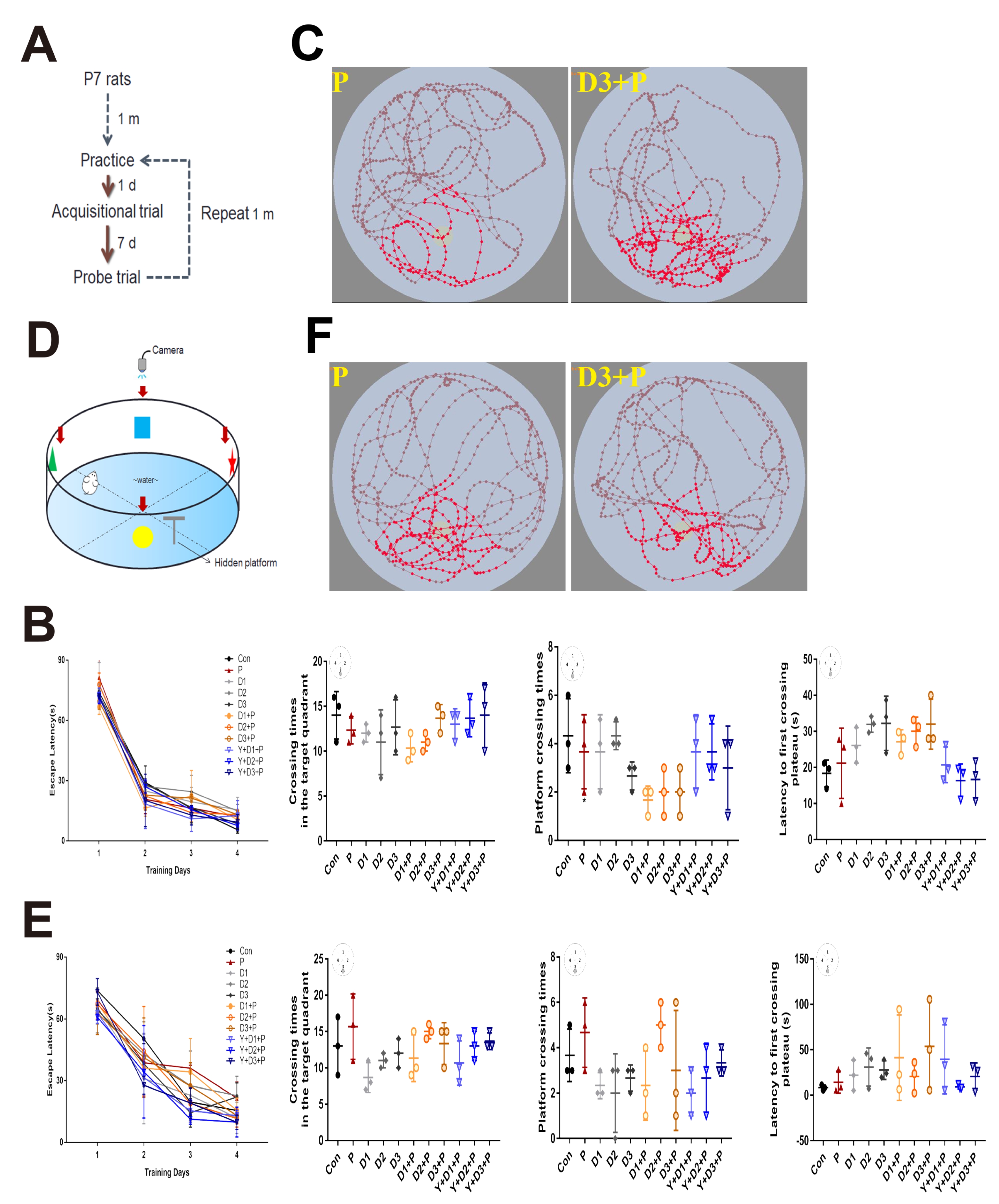
Fig. 9. Absence of long-lasting cognitive dysfunction after a single neonatal propofol infusion. (A) The workflow diagram of water maze test. (B) During the acquisition phase, no significant difference in escape latency to locate the submerged platform (Quadrant 3 is the target quadrant) was seen. The probe task, data of target quadrant crossing times, platform crossing times, and latency to first crossing platform showed no significant difference among all groups at P30 (p>0.05). (C) Representative swim trace from different groups was captured after removing the platform on the probe day (incomplete display). Swimming path taken by anesthetic-exposed rats at age 1 month was no longer than controls in the probe test. Circles filled in light yellow symbolize the location of the removed platform in quadrant III. Red dashed lines show the route the swimming rats took in the target quadrant and the brown dashed lines represent the rat location in the trial. (D) Experimental design. (E) In each trial index on 2-month-old rats, there were no significant differences seen during the acquisition or probe phases (p>0.05). (F) Swim trace pictures of 2-month-old rats showed no cognition impairment among the groups (incomplete display) (n=3 animals per group). The long term results at P30 and P60 were both manifested as P group (30 mg/kg propofol), D1/D2/D3 group (1, 10 or 20 μg/kg DEX alone injection), D1/D2/D3+P group (co-exposure to 1, 10, or 20 μg/kg DEX 1 h before 30 mg/kg propofol), and Y+D1/D2/D3+P group (1 μg/kg yohimbine 0.5 h before the similar injection regimen with DEX and propofol), seperately. All drugs were intraperitoneally injected on P7.
© Exp Neurobiol


